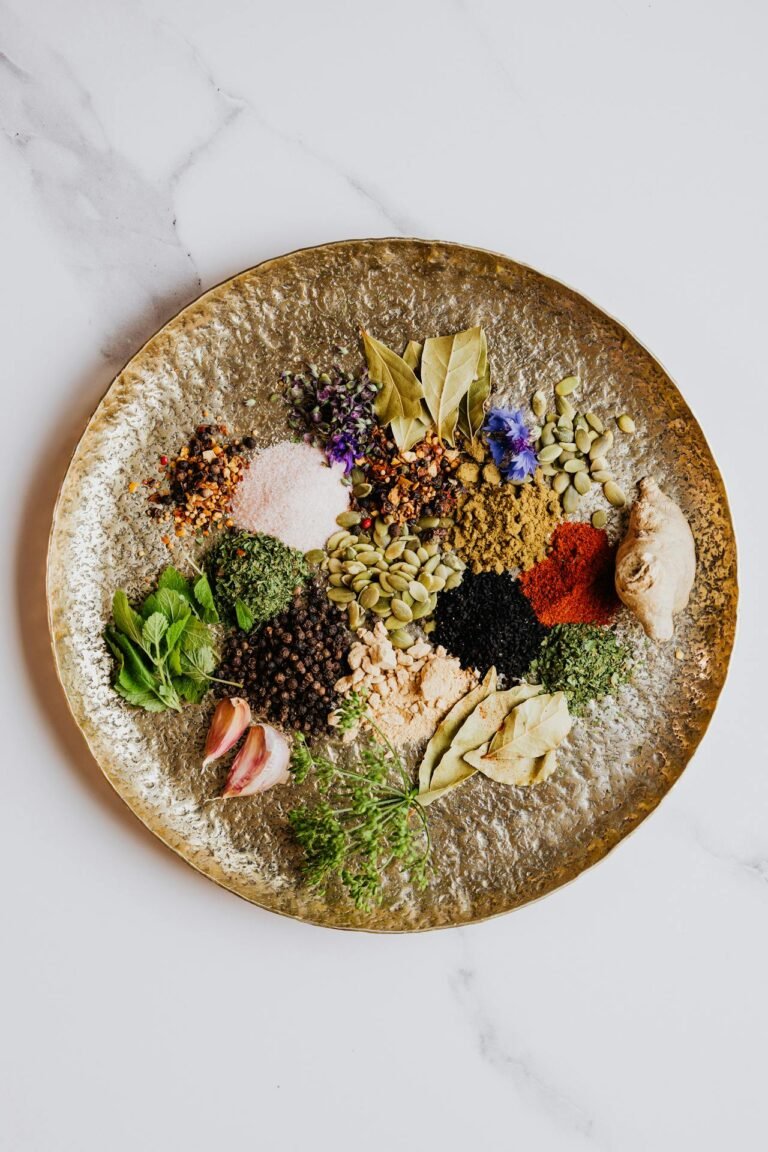Turmeric: The Golden Spice with Powerful Health Benefits
Turmeric: The Golden Spice
Turmeric, often called the “golden spice,” is a vibrant yellow-orange powder widely celebrated for its distinct flavor and remarkable health benefits. Originating in South Asia, turmeric has been a cornerstone of traditional medicine and cooking for thousands of years. Today, it continues to gain popularity worldwide not only for its culinary versatility but also for its potent anti-inflammatory and antioxidant properties.
Origin & History
Turmeric (Curcuma longa) is native to India and Southeast Asia. It has been used for over 4,000 years in Ayurvedic and traditional Chinese medicine. Historically, turmeric was valued not only as a spice but also as a dye and healing agent. India remains the largest producer and consumer of turmeric, where it’s essential in curries, rice dishes, and ceremonial rituals.
Flavor Profile
Turmeric has a warm, slightly bitter, and peppery flavor with an earthy undertone. Its bright golden color adds visual appeal to any dish. While it can be overpowering if overused, a small amount can add depth and complexity to both savory and sweet recipes.
Common Culinary Uses
- Indian curries and dals
- Middle Eastern rice dishes
- Golden milk and health drinks
- Pickles and chutneys
- Soups and stews
Health Benefits
Turmeric contains curcumin, a bioactive compound with powerful anti-inflammatory and antioxidant effects. Research suggests curcumin may help reduce symptoms of arthritis, improve brain function, and lower the risk of chronic diseases such as heart disease and cancer. Additionally, turmeric supports digestion and immune health.
Turmeric Comparison: How It Stacks Up Against Similar Spices
| Feature | Turmeric | Ginger | Cinnamon | Saffron |
|---|---|---|---|---|
| Primary Use | Curry, health drinks, coloring | Cooking, baking, medicinal teas | Baking, sweet and savory dishes | Flavoring, coloring, luxury spice |
| Flavor Profile | Earthy, bitter, slightly peppery | Spicy, warm, slightly sweet | Sweet, warm, woody | Floral, slightly honeyed |
| Key Health Benefits | Anti-inflammatory, antioxidant | Anti-inflammatory, digestive aid | Blood sugar regulation, antimicrobial | Antioxidant, mood enhancer |
| Active Compounds | Curcumin | Gingerol | Cinnamaldehyde | Crocin, Safranal |
| Common Forms | Powder, fresh root, supplements | Fresh root, powder | Ground powder, sticks | Stigmas (threads) |
| Typical Culinary Dose | ½ to 1 tsp in cooking | 1–2 tsp fresh or powder | ½ to 1 tsp | A few threads |
| Supplement Dose (Curcumin extract) | 500–2,000 mg/day (consult healthcare provider) | N/A | N/A | N/A |
Best Ways to Take Turmeric for Health Benefits
Culinary Use
Incorporate ½ to 1 teaspoon of turmeric powder daily into meals such as curries, soups, smoothies, or golden milk. Using fresh turmeric root grated into dishes or teas can provide more vibrant flavor and nutrition.
Supplements
Turmeric supplements typically contain standardized curcumin extracts that offer higher potency than culinary turmeric. Clinical studies often use 500 to 2,000 mg of curcumin daily, split into multiple doses, to achieve anti-inflammatory effects. Due to curcumin’s low natural bioavailability, many supplements include black pepper extract (piperine) or use formulations designed for enhanced absorption.
Tips for Maximizing Benefits
- Consume turmeric with healthy fats like olive or coconut oil to improve absorption.
- Add a pinch of black pepper to meals or supplements to boost curcumin uptake significantly.
- Always consult a healthcare provider before starting turmeric supplements, especially if pregnant, nursing, or taking medication.
Tips for Buying & Storing
For the best flavor and benefits, look for organic turmeric powder or fresh turmeric root. Store turmeric powder in an airtight container away from heat and light to preserve its potency. Fresh turmeric root can be refrigerated and used similarly to ginger.
Recipe Idea: Golden Turmeric Latte
- 1 cup milk (dairy or plant-based)
- 1 tsp turmeric powder
- ½ tsp cinnamon
- ¼ tsp ginger powder
- 1 tsp honey or maple syrup (optional)
Heat milk gently with spices, whisk well, and sweeten to taste. Enjoy a soothing, anti-inflammatory drink!
Substitutes
If turmeric is unavailable, saffron can provide color, though the flavor differs significantly. Ginger offers some similar warmth but lacks turmeric’s bitterness.
Versatile Spice
Turmeric is a versatile spice that enhances both the flavor and healthfulness of your meals. Whether you’re spicing up a curry or enjoying a golden latte, incorporating turmeric into your kitchen routine is a flavorful way to boost well-being. Ready to explore premium turmeric and other spices? Visit SpiceBytes Spice Glossary.



